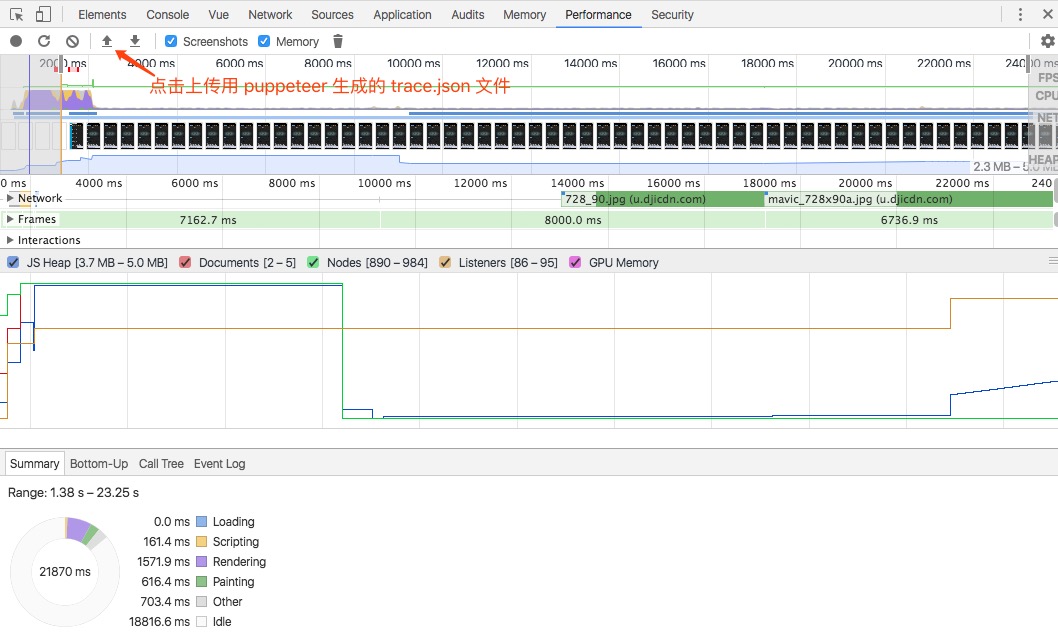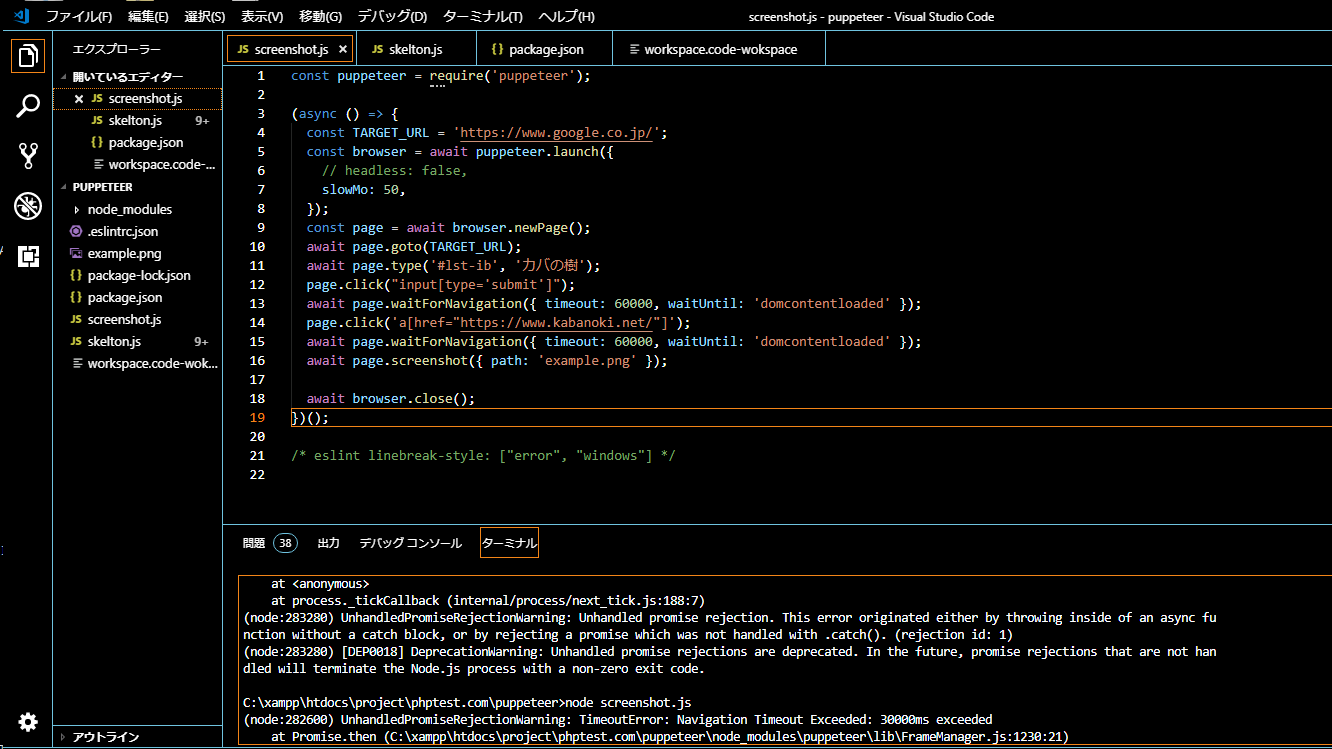
- Puppeteer screenshot path how to#
- Puppeteer screenshot path install#
- Puppeteer screenshot path full#
You can automate many tasks with Puppeteer, one of them being taking screenshots.
Puppeteer screenshot path install#
When you install Puppeteer, it downloads a recent version of Chromium (~170MB Mac, ~282MB Linux, ~280MB Win) that is guaranteed to work with the API.
Puppeteer screenshot path full#
Puppeteer runs headless by default, but can be configured to run full (non-headless) Chrome or Chromium. Puppeteer is a Node library which provides a high-level API to control Chrome or Chromium over the DevTools Protocol.

Thankfully, there are other tools like Puppeteer, which does allow for plenty of customization. Using screenshots is a common practice, especially for web developers showcasing their work in a portfolio but the most popular screen capturing tools don't allow for much customization, so the quality of the resulting images may not be good enough. Note: Be sure to install the newest version of Node.js. Make sure that node binary is in your environmental variables or PATH by typing node -v in the command line. Install Node.js Download Node.js here and follow the installation steps.
Puppeteer screenshot path how to#
So whether it's photographs, illustrations or renders, getting good images is an important step in web development. How to Install Puppeteer Installation takes only two steps. They help convey meaning and emotion, and they can make any design more attractive-or less, depending on how you use them. Username: 'lum-customer-USERNAME-zone-YOURZONE',Īwait page.Images are an important part of every website.


Puppeteer is a Node library created to control headless and non-headless Chrome and Chromium with its high-level API. And always close the browser to avoid resource leaking You can use our reliable and scalable screenshot API with myriad options to avoid the burden of setting up and managing Puppeteer. We are using yargs-parser to convert our CLI arguments into something useful. You use the parameter path in Puppeteer to save the screenshot. Learn how to setup your Puppeteer proxy settings and integrate with Bright Data’s Proxy IPs. Create a new project, jump in to initialise it and install the following: mkdir puppeteer-katex cd puppeteer-katex begin project with basic settings yarn init -y yarn add puppeteer yargs-parser.


 0 kommentar(er)
0 kommentar(er)
